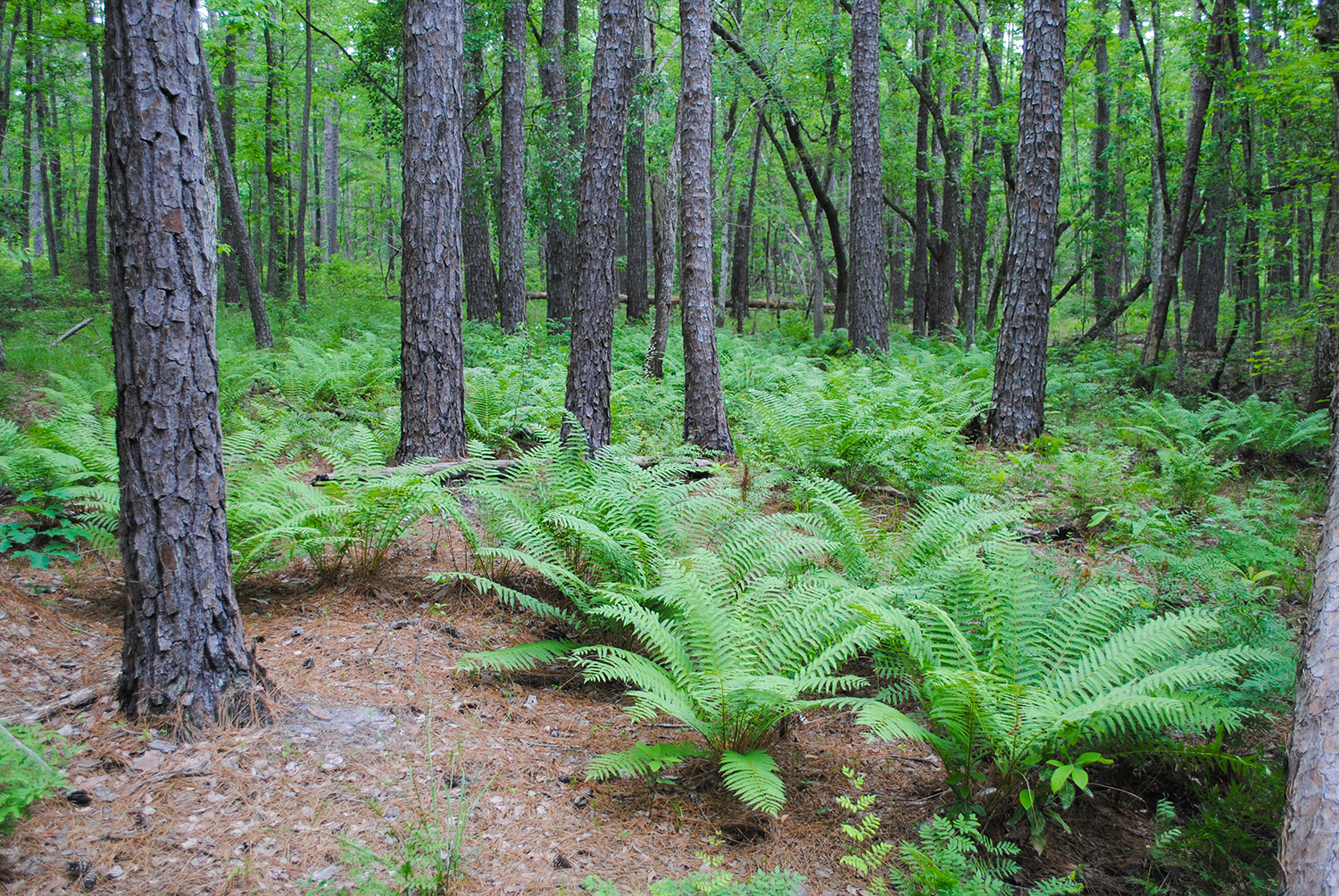This post is the second part of our May field trip to see interesting flora of Texas with Peter Loos. To read the first post, click here (Stewartia malacodendron and more).
After leaving Little Cow Creek, we headed back west, grabbed food to go at Hamburger Depot, and crossed Lake Sam Rayburn to continue our herbaceous plant explorations. Peter Loos took us deep into the Angelina National Forest to see a carnivorous plant bog he has been restoring from too much erosion. We bounced in the van on an obscure backroad as the students finished their lunches. Juvenile longleaf pines (Pinus palustris) that had avoided tires and blades marked the drive with their dense, grassy crowns that resembled marking whiskers more than baby plants.
At the end of the trail was a gate and an opportunity for me as the driver to finally eat a bite. On the other side of the barrier we could see hundreds of Sarracenia alata visible even before we exited the van. As I scarfed down my burger and fries, I chuckled at the irony of eating food in the presence of plants that could digest, too. The pale pitcher plant is the only Sarracenia native to Texas, and seeing them in the wild certainly piqued my interest in growing them. We saw other bog cohorts including Pogonia, Eriocaulon, and Utricularia mixed in with the pitcher plants, and woody shrubs like Rhododendron oblongifolium and Eubotrys (Leucothoe) racemosa flanked either side of the trail.
Sarracenia alata growing well on either side of the path. On the right you can see where some erosion has occurred.
A closeup of the flowers of Sarracenia alata
Students were elated to find Sarracenia alata!
Pogonia ophioglossoides bloomed right alongside the pitcher plants.
The lollypop flowers of a Eriocaulon species.
Rhododendron oblongifolium was in flower at the edge of the bog.
From the bog we drove through pine forest whose understory was covered with bracken fern (Pteridium aquilinum) and south-facing slopes along the road were dotted with goat’s rue (Tephrosia virginiana).
We arrived at the last stop of the day, a baygall. Baygalls are habitats in the southeast where springs and seeps keep the soil moist. Sweetbay (Magnolia virginiana) tends to be a dominate woody species.
The habitat of a baygall. The understory looks lush from the abundance of Osmundastrum cinnamomeum or cinnamon fern.
Here we saw rare plants including Trillium texanum seedlings. We didn’t see any with residual flowers or seed heads. Peter commented that populations have been disturbed by boars.
Juvenile Trillium texanum
There was also a naturally occurring fernery. Here cinnamon fern (Osmundastrum cinnamomeum), royal fern (Osmunda spectabilis), and netted chain fern (Woodwardia areolata) intermingled to form a lush fern gully. Seeing them together gave me ideas of how to combine them here in the south.
So much green in this fernery!
Exiting the woods Peter pointed out a rare coneflower, Rudbeckia scabrifolia. It only occurs in a few counties in Texas and Louisiana.
Rudbeckia scabrifolia is in the right corner of this photo. You can see last year’s inflorescence still standing.
Overall, it was a great trip showing students several diverse habitats that occur in east Texas along with some rare plants here in the Lone Star State.




































